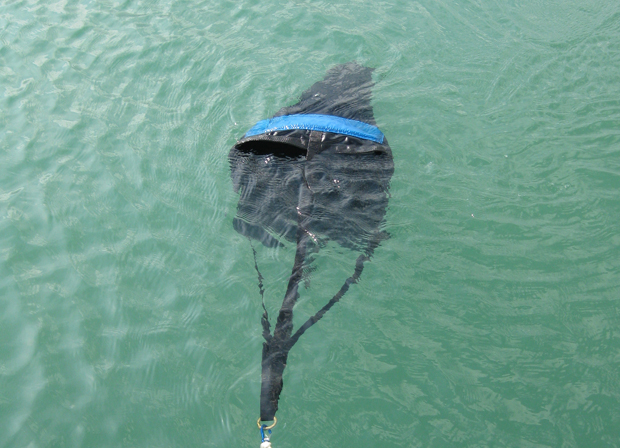June 12, 2015
By Florida Sportsman Staff
When winds blow, pack your socks.
 Choose anchors with foam flotation and a bottom weight to open the chute automatically.
Choose anchors with foam flotation and a bottom weight to open the chute automatically.
A little breeze is helpful in setting up a kayak drift. Kayaks naturally orient themselves perpendicular to the waves, allowing a drift with the bow pointed in a predictable direction. That sideways, less aerodynamic drift also slows them somewhat in moderate winds. Hang both legs over the side to create more drag—and enhance stability—if necessary. (Kayak pedals in the down position perform this function well.) If you don't use a rudder, change the kayak's angle slightly by hanging one leg over the side (left leg to turn left; right leg…you got it).
But it can get downright windy in February. In a 20- to 30-knot wind, it's virtually impossible to work a light lure effectively as the craft is hurled across a flat. A small drift chute, a.k.a. sea anchor, rectifies that problem.
Rolled up, a drift chute requires minimal space, fitting easily inside a hatch. Tie it off on an anchor point (or adjust your anchor trolley) to orient the kayak in the direction you wish to cast. My preference for fishing inshore grassflats is usually straight off the stern; this points me downwind, allowing for long casts with the least amount of bow in my line.
If you get a rare day this month that allows kayak fishing off the beach, don't even think about fishing for big game offshore without a drift chute. Tarpon or other large critters have been known to drag kayaks for miles. Tie a drift chute—larger models are okay for this duty—off at the stern prior to launch, and simply toss it overboard when you hook up. The chute generates the resistance that a steamlined kayak doesn't, and can save you a long paddle home. - FS
First Published Florida Sportsman Feb. 2010
By Jerry McBride

